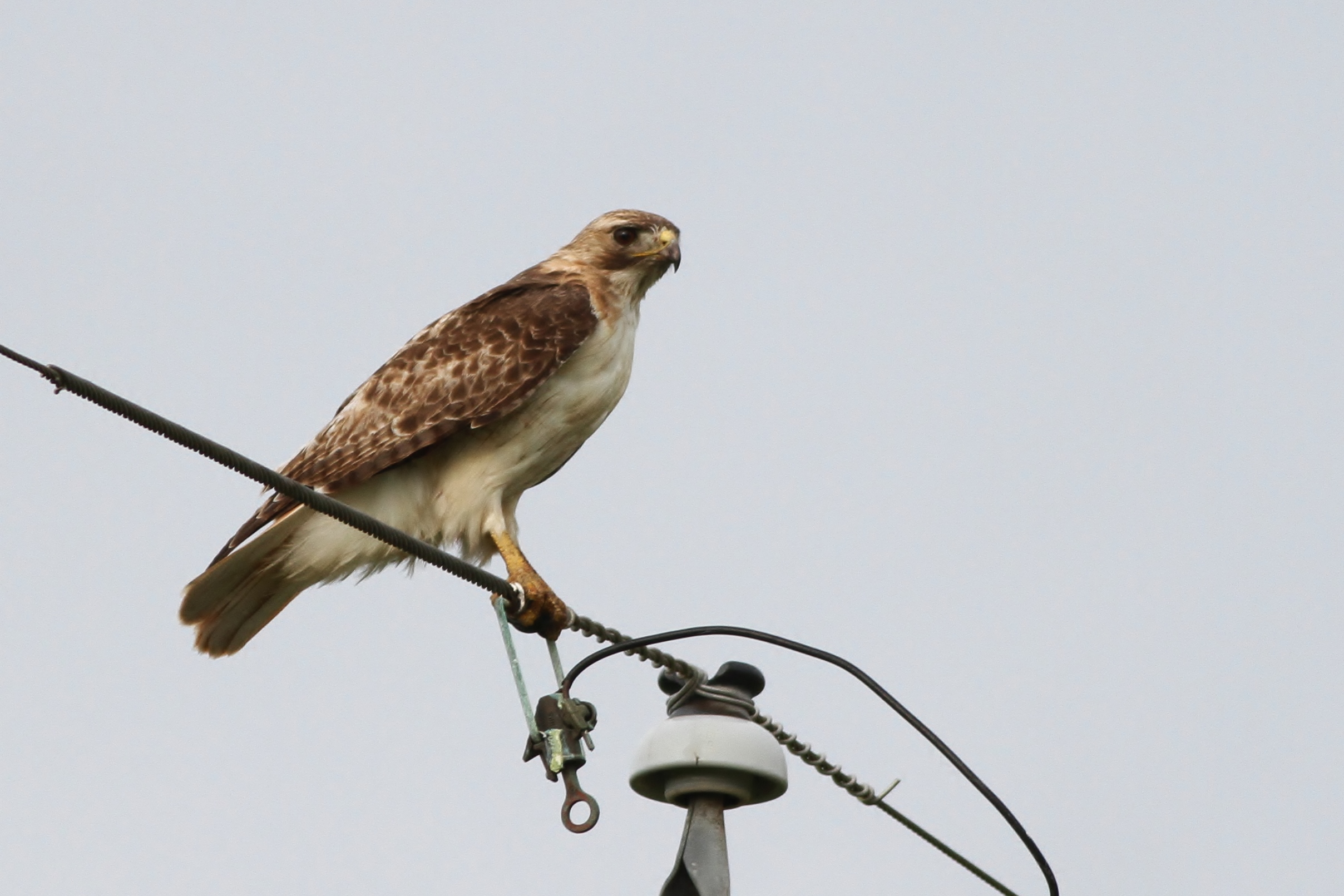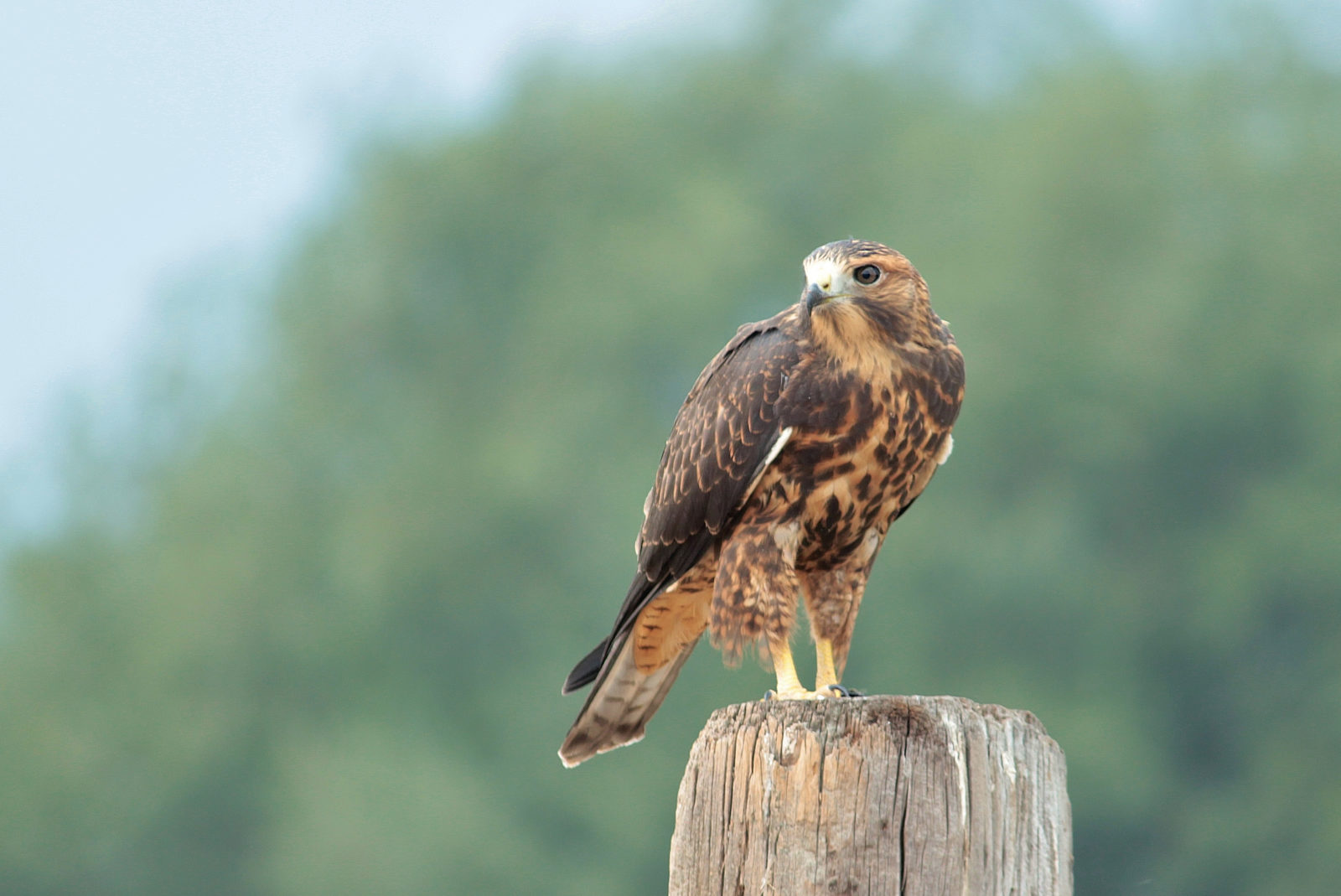

Most Red-tailed Hawks are rich brown above and pale underneath with a streaked belly. Red-tailed Hawks are a member of the genus Buteo, and like the other Buteos, they have broad, rounded wings and a short, wide tail. Profile by Bryce Loschen: Red-tailed Hawks are the most familiar and common large hawk in North America. So turn your eyes to the skies and look for a beautiful Red-tailed Hawk. Fall hawk migration begins in August with Mississippi Kites, soon to be followed by many other species of raptors. Perhaps the best area for Red-tailed Hawks in our region is the Katy Prairie, but they can be seen in many areas that have open habitat. This is due to the fact that many northern breeding birds move south during the frozen winter of the northern states. However, it is our winter months that are the best time to study Red-tailed Hawks. In our area we have some breeding birds that can be found throughout the year. This includes desert, scrublands, grasslands, roadsides, fields, and pastures, parks, broken or open woodland. They can be found in various types of open habitat. So if you want to learn to identify hawks, the Red-tailed Hawk is a good place to start! Red-tailed Hawks are often the most numerous raptor in a region. Complicating matters further are the immature birds of these different forms-they often can appear to most closely resemble a non-Red-tailed species. And just to keep matters exciting, there are variations ranging between these extremes. The "Krider's" Red- tailed Hawk, a pale-colored subspecies, has extensive white throughout and may have a white or pale reddish tail. The color pattern ranges from the classic bird with brownish upper parts, whitish underneath with brown markings, and a reddish tail to the almost totally black "Harlan's" Red-tailed Hawk.

I enjoy them because their plumage is highly variable.

I’ve marked 7 trail access points on my GPS track, above, in blue.Easiest access is from Huesta Creek Trailhead.Overall, this is an easily accessible and smooth trail run. Not a lot of people I saw more deer and birds than humans. There were a few mountain bikers on the trail when I went, so I would step off the trail and let them ride on. There is a low observation platform with benches on the West trail, and a few dilapidated old structures in the center of the East trail. You will also pass a few structures hidden in the woods. The North arc of this trail (below Maverick Creek) is a little bit rougher, with rocks, roots, and some short but steep hills. For an elevation profile, see the Trailforks site. The trail is mostly under canopy, so it is a nice, peaceful run on a flat, winding trail. This is the woods, so you do need to watch your step for the occasional root. If you happen to hit pavement, just turn around and get back to the single track. If you stick to the Right or the Left at trail intersections, you should be able to follow the trail fairly easily. The single track trail starts here: Bird of Prey North Entrance Then on the other side of the tunnels, instead of taking the paved trail left, head down to and across the stream bed. To onto the single track, cross through the Babcock road drainage tunnels: Babcock Drainage Tunnels If you see my GPS track below, I ran along the streambed going out, then took the pavement coming back: GPS Track: Bird of Prey from Huesta Trailhead The streambed is unimproved, so expect loose rocks, gravel, uneven surfaces, and briars. You can either stick to the pavement heading South, or head to the streambed and follow that down toward Babcock. To get to Bird of Prey, I like to park at the Huesta Trailhead. All tucked in between Huesta Creek, Bamberger Park, and Fox Park. If you are OK with a few out and backs, this can be about a 4 mile run (a mile to get there and back, 3 miles of single track). The main trail at Bird of Prey is about a mile long. You need to know where the trail entrances are, or you might run right by it and never know this area exists.

The Bird of Prey single-track area could also be known as “the place between the other parks”.


 0 kommentar(er)
0 kommentar(er)
